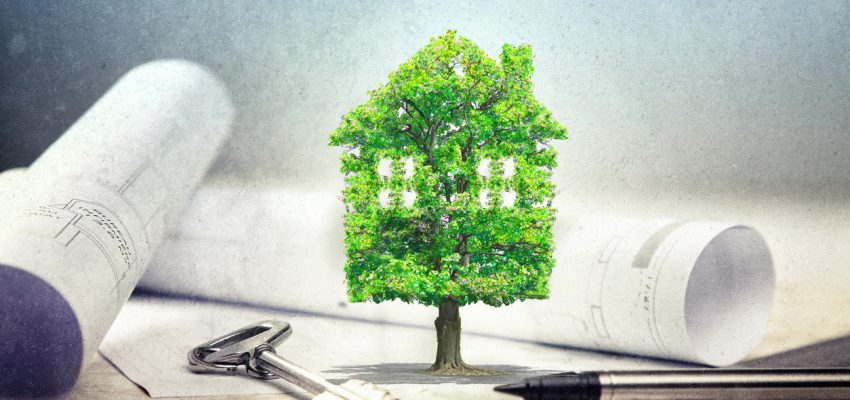This is a guest post, courtesy of Matt Doyle, Vice-President and Co-Founder of Excel Builders*
With the rising cost of traditional forms of energy such as gas, coal and electricity, achieving a Net-Zero Energy home is a growing competition among homeowners and builders. Net-Zero Energy means that the home produces as much energy as it uses so that the household winds up paying nothing on an energy bill.
Homes that achieve Net-Zero Energy do not have to be ‘off the grid’, and can be connected to a power grid to stay reliably powered. The last thing you want is your power to cut out in the middle of a streaming marathon because your solar panels got dirty! Here’s how to make it happen…
Impeccable Insulation
The biggest challenge in achieving a Net-Zero Energy home is reducing energy use. That means looking at how you can minimize the energy use from your furnace and air conditioning. The best way to do that is by keeping the home insulated enough to stay temperate during the worst heatwave or cold spell. Make sure you insulate every part of your home’s ‘envelope’, including walls, roof, floors, and below the foundation. Pay particular attention to the thermal bridges that generate heat, such as a steel house frame.
Air Tight Sealing
Make sure your home’s temperature regulation acts at optimal efficiency by ensuring your home is air tight. If air can escape, it means cold air can get inside during the winter and hot air can get in during the summer. As a result, your thermostat has to use more energy to hold your set temperature, which will make achieving a Net-Zero Energy home impossible.
First, you should test your home’s air tightness to find any leaks. For even the smallest leaks, break out the caulking, weatherstripping, foam, and gaskets to seal them up completely. Check your internal ductwork to ensure it is working properly and doesn’t have any leaks.
Rooftop Solar Panels
With the insulation and air tightness taken care of, the next step is setting up your Net-Zero Energy home to generate its own energy. The most common way to do this is with rooftop solar panels. Make sure that you place the solar panels somewhere that maximizes the amount of direct sunlight through the entire day, and clear away any tree branches that might block your system.
Most homes with solar panels are still connected to the energy to top up power when the solar panels do not provide enough by themselves. However, depending on where you live you might able to sell excess energy you generate back to the power grid, which further helps you maintain a Net-Zero Energy bill.
Geothermal Pump Systems
One way to provide extra heating and cooling without using a furnace or air conditioner is by drawing on the natural temperature of the earth below your home. If you dig far enough below the surface of he earth, the temperature remains relatively stable throughout the year—this is where Geothermal Heat Pumps come in to help you achieve Net-Zero Energy.
These systems are set up to draw upon the ground temperature throughout the year to keep your home heated and cooled, depending on the season. It works because the stable temperature means it is warmer underground in the winter, and cooler underground in the summer. The pump system draws on this temperature using different means, depending on the system set up, to regulate your home’s temperature with less energy used than a furnace or air conditioner.
Energy Monitoring
The last way you can achieve Net-Zero Energy is with proper energy usage and monitoring. Even with all of the above set up as perfectly as possible, you will not have a Net-Zero Energy home if you do not moderate and track your energy use. All the insulation, air tightness, solar panels and geothermal pumps in the world cannot overcome inefficient appliances, leaving the lights on, and laser rave parties twice a week.
There are a number of home energy monitoring systems and devices you can set up to help stay on top of your usage. You can install a special dashboard that shows real-time energy use in the house, or set up Smart Home devices and phone apps to monitor everything even when you aren’t home. You should also make sure that all your outlets, wiring, and appliances are new or at least working at the necessary efficiency levels to have a Net-Zero Energy home.
*Matt Doyle is the Vice-President and Co-Founder of Excel Builders, a custom home building  company serving Delaware and Maryland. The company specializes in ICF and custom-built, energy efficient homes. Matt grew up in the construction industry and he has a Bachelor of Science degree in Entrepreneurship from the University of Alabama. He also has an extensive background in internet marketing and has worked with some well-known international companies such as Best Western, McGraw Hill Construction, Sharp, and Canon.
company serving Delaware and Maryland. The company specializes in ICF and custom-built, energy efficient homes. Matt grew up in the construction industry and he has a Bachelor of Science degree in Entrepreneurship from the University of Alabama. He also has an extensive background in internet marketing and has worked with some well-known international companies such as Best Western, McGraw Hill Construction, Sharp, and Canon.





A tree falls in the woods and degrades back into CO2 in a few years. This is from The Carbon Cycle. A tree takes CO2 out of the air and when it dies it turned back into CO2.
A tree is used to build a house and that carbon can be around for a lifetime. How many more ways can you think of that will hold carbon rich material from turning back into CO2?